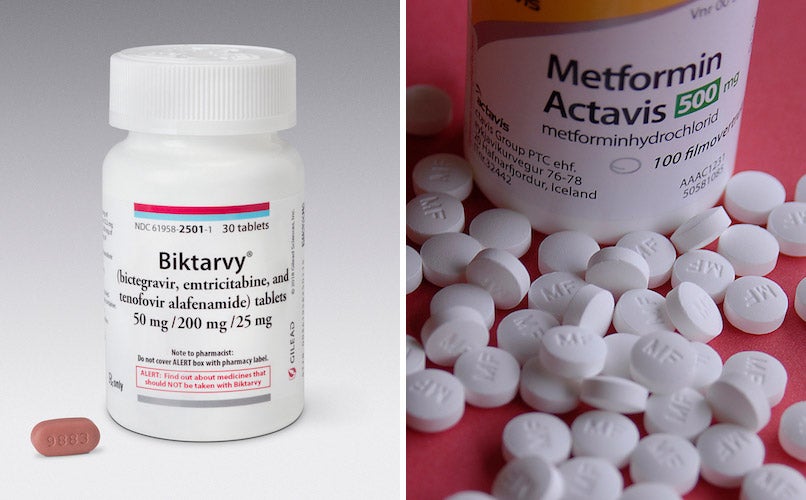A Broader View of Specialty Pharmacy: Better for Patients — and Health Systems
September 6, 2019

Matthew Morris
To realize the full value of a specialty pharmacy program, health systems must look at patients in their entirety rather than merely the price tags of the drugs they're prescribed.
Specialty pharmacy is growing at an explosive rate. Specialty drugs are expected to account for up to 50% of pharmacy revenues by 2020, and the number of accredited specialty pharmacies in the U.S. has more than doubled since 2015, to more than 900.
Increasingly, these specialty pharmacies are found within hospitals and health systems. More than 1 in 4 specialty pharmacies are now owned by health systems, and the percentage of health systems that report having a specialty pharmacy has increased sharply in recent years. This trend largely reflects the growing importance of prescription drug costs to health-system revenues and to overall healthcare spending.
Despite the financial upside, health systems exploring specialty pharmacy programs often balk at the hurdles and timelines involved. Accreditation can take more than a year. Then, health systems must convince drug companies to provide access to specialty drugs. Finally, they must convince payors and pharmacy benefit managers (PBMs) to allow the health system pharmacy into the specialty pharmacy network.
The focus on access and drug pricing reflects the extent to which specialty pharmacy programs — and the patients who rely on them — have come to be defined by the drugs themselves, which are considered specialty if they exceed minimum cost thresholds (often thousands of dollars per month) set by PBMs or other entities.
This is a narrow definition of specialty, and for health systems, a limiting one. Just as important as the access to specialty drugs — and the attendant revenue — is the transformative impact that specialty pharmacies have on the ability of health systems to provide integrated care and manage risk in the context of accountable care organizations (ACOs) and other forms of value-based care.
Patients served by specialty pharmacies are much more than the drugs they’re on. They’re individuals with chronic or complex conditions who often need help managing financial and social issues.
The patients served by specialty pharmacies are much more than the drugs they’re on. They’re individuals with chronic or complex conditions who often need help managing the equally complex financial and social issues that stand in the way of their best possible health. Due to the nature of their conditions, they’re also prone to ER visits, inpatient admissions, and other healthcare utilization, all of which have important cost implications under value-based care.
To realize the full value of a specialty pharmacy program and achieve better clinical outcomes, health systems must look at patients in their entirety rather than merely the price tags of the drugs they’re prescribed. A broader view of specialty leads to better care and a stronger bottom line.
Putting the patient at the center
Health systems, especially those serving complex and high-risk populations, can’t afford to wait for access to the full array of specialty drugs. Instead of fixating on the hundreds of drugs we can’t access, we should focus instead on the thousands that are available, including generics, unrestricted brand name drugs, and specialty drugs for conditions such as HIV and cancer. Working with the drugs in front of us enables health systems to deliver better care and capture additional revenue immediately.
Consider a hypothetical patient, a 42-year-old woman recently diagnosed with HIV. (We’ll call her Jane.) An infectious disease specialist in Jane’s health system has just prescribed her Biktarvy, a once-a-day pill that combines three antiretroviral drugs and costs up to $3,000 per month.
Like many patients with HIV, Jane has other chronic conditions that require daily medication. Each month, she visits her community pharmacy to fill her prescriptions: metformin for type 2 diabetes, a beta blocker and diuretic for hypertension, and a corticosteroid for inflammatory bowel disease. None of these drugs exceeds $20 per month.
 For health systems with a specialty pharmacy, isolating costly specialty drugs (like the HIV medication Biktarvy) from non-specialty drugs (like the diabetes drug metformin) compromises patient care and leaves revenue on the table. (Business Wire/Getty Images)
For health systems with a specialty pharmacy, isolating costly specialty drugs (like the HIV medication Biktarvy) from non-specialty drugs (like the diabetes drug metformin) compromises patient care and leaves revenue on the table. (Business Wire/Getty Images)
The PBM for Jane’s health insurance provider, which handles all of her other medications, contracts with a specialty pharmacy in another state to supply the Biktarvy. While Jane picks up the new pills without incident, she has extraordinary difficulty working with the specialty pharmacy on logistics including her credit card on file, co-pays, deductible accumulators, and more.
Jane has the medication she needs, but her pharmacy care has now been split in two. Neither the community pharmacy nor the specialty pharmacy is thinking about the big picture: Jane’s goals for her health and her life.
The disconnected out-of-state pharmacy has many structural barriers that prevent it from assessing Jane’s goals and intervening to assist with them. Moreover, because her care is split between a community and specialty pharmacy, neither pharmacy has full visibility into her daily medication regimen and may overlook potential interactions between Biktarvy and Jane’s other drugs.
The whole arrangement is driven by the cost of the drugs and how they have to be handled, not by Jane’s needs. This is the narrow view of specialty.
Now imagine an alternate reality: The specialty pharmacy is housed within Jane’s health system and becomes the center of excellence that looks after her medication needs. In addition to supplying the Biktarvy, the pharmacy takes on all four of her other prescriptions — even though they don’t qualify as specialty drugs — to ensure the best possible outcome.
Now the pharmacist has visibility into all of Jane’s medications and can advise her accordingly. Even better, a pharmacy liaison is embedded with Jane’s care team and works directly with the clinical staff and support services (such as social work and patient navigation) to make sure Jane’s sticking to her medications, managing her overall health, and getting the support she needs as she begins the Biktarvy.
Jane is feeling better and is relieved that her HIV is controlled. The care team is confident that she’s getting the best possible care. And the health system just captured 10% more revenue and lowered Jane’s total cost of care.
Healthier patients and stronger health systems
For a specialty pharmacy within a health system, taking on a patient’s non-specialty drugs is an important source of added revenue and a key driver of clinical outcomes.
In Boston, where our health system is based, patients who require one or more specialty drugs generate an average of $20,000 in annual revenue. However, those patients also typically take five other non-specialty drugs that generate $2,000 per year, on average. Health systems and specialty pharmacies that adopt a narrow view of specialty are leaving that $2,000 in revenue on the table.
Consolidating specialty and non-specialty drugs and embedding a pharmacist in the care team leads to better medication adherence, better clinical outcomes, lower healthcare utilization, and lower costs.
More importantly, the non-specialty drugs that patients like Jane take — for diabetes, heart disease, and other chronic conditions — are associated with high healthcare utilization, including ER visits. In the context of ACOs and value-based care, consolidating specialty and non-specialty drugs and embedding a pharmacist in the care team leads to better medication adherence, better clinical outcomes, lower utilization, and lower costs.
Demonstrating better outcomes, in turn, helps health systems gain access to special pharmacy networks and a broader range of specialty drugs. This bolsters revenue and patient care further, creating a virtuous circle that ultimately strengthens health systems and patients.
Specialty pharmacies have traditionally been focused on process metrics: medication possession ratio, proportion of days covered, turnaround time for the prior authorization of specialty drugs. While these process metrics are important, health systems and specialty pharmacies should be focused on the outcome metrics that matter most: Are patients getting better? Are their conditions easier to manage? Are they living a better life?
From this vantage point, it’s easy to see that specialty pharmacy is more than a vehicle for certain drugs. It’s an investment in healthier patients.


